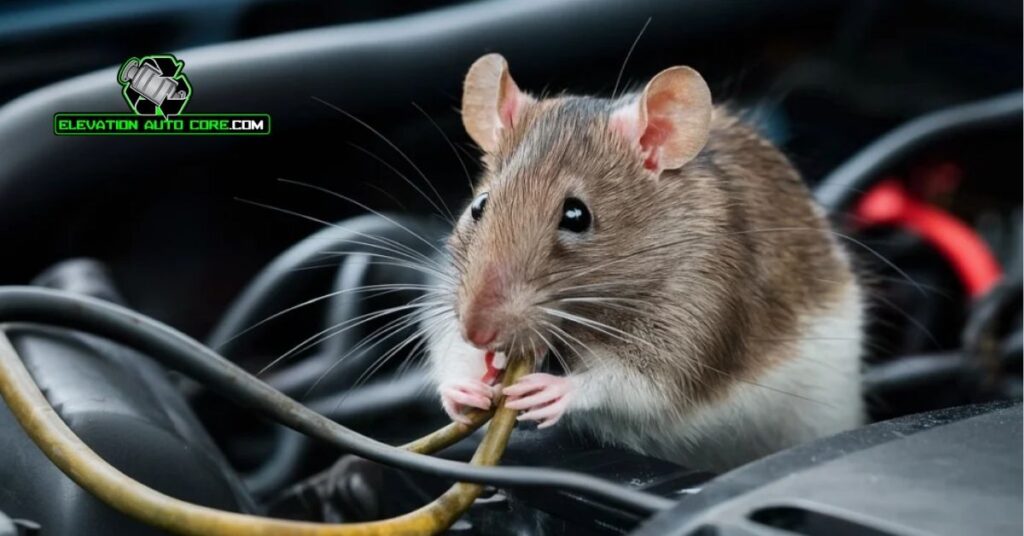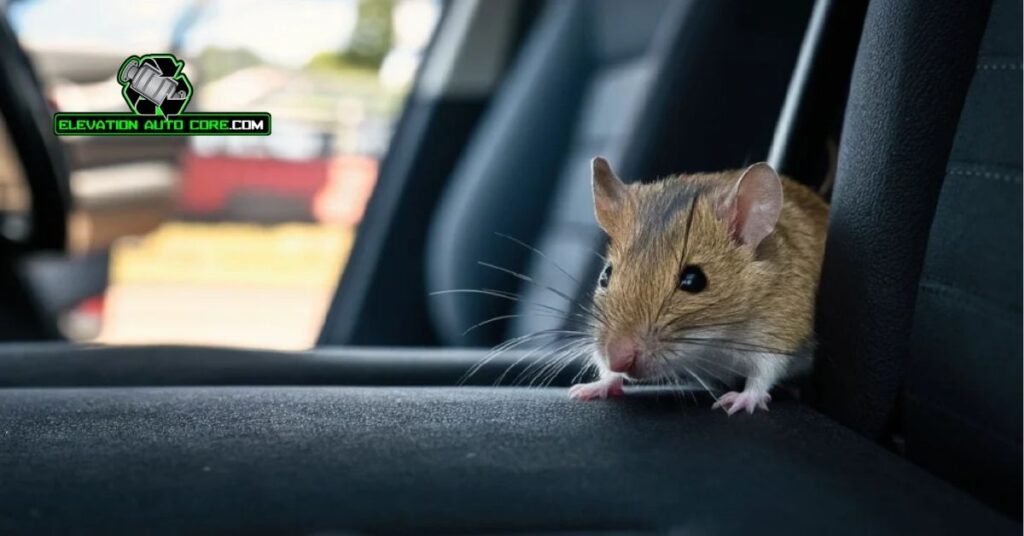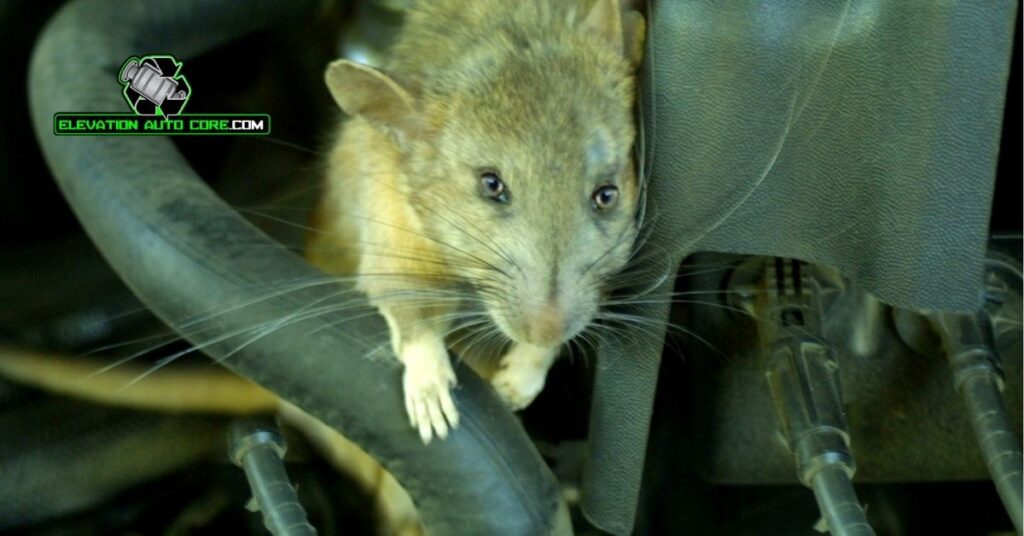How long do mice stay in a car while driving, and could they be hitching a ride without you knowing? These tiny stowaways can find their way into vehicles seeking warmth or shelter, but their presence poses risks to your safety and your car’s condition. Understanding their behavior is key to keeping your drive rodent-free.
Understanding The Behavior Of Mice In Cars

Mice often find cars appealing due to the warmth, shelter, and potential food sources they may offer. Their behavior inside the vehicle depends on various factors that influence their time spent there.
Why Do Mice Enter Cars?
Mice enter vehicles primarily seeking warmth, especially during colder months. Engine compartments provide an ideal temperature for them to stay temporarily. Food remnants left inside the car also attract rodents. If nesting materials like paper or cloth are present, they might use them to establish a temporary shelter. These factors make vehicles an attractive and secure space for mice.
Factors Influencing Mice’s Stay While Driving
The level of disturbance inside the car during driving often determines how long mice remain. Quiet drives with minimal vibrations might result in extended stays. But, loud sounds or vibrations from the engine can scare them away. Access to hiding spots, such as under seats or in vents, provides them another reason to stay longer. The availability of food or nesting materials further increases their likelihood of not leaving immediately. Without these, they’ll likely exit at the nearest safe opportunity.
Signs Of Mice Presence In Your Vehicle

Detecting signs of mice in your car early can help you prevent potential damage. These rodents often leave noticeable clues that you can identify with a close inspection.
Common Indicators Of Mice Infestation
Droppings are one of the most apparent signs, typically found under seats or in door compartments. Chewed wires or plastic materials might indicate mice activity, as they often gnaw on such elements to keep their teeth sharp. Unusual odors, such as a pungent or musky smell, often come from nest materials or urine. Scratching noises might be heard, especially when the car is stationary, as mice move through hidden areas. Food debris like nut shells or crumbs may accumulate if they bring items into the car for feeding. Damaged insulation near engine components can also suggest their presence, caused during nesting attempts.
Places Mice Prefer To Hide In Cars
Engine compartments often attract mice due to warmth and secluded spaces. Glove compartments or storage areas provide secure places for hiding or nesting. Air vents or ductwork can serve as pathways or quiet nesting spots. Cabin filters may also become a site for nesting, as mice can access softer materials within. Beneath seats offers an ideal combination of cover and proximity to food particles. Trunk corners or under spare tire compartments frequently house rodents, especially if cluttered with materials like paper or fabric.
How Long Do Mice Stay In Car While Driving
Mice often stay hidden when you’re driving, but their behavior depends on various factors. Movement, noise, and environmental conditions directly influence how long they remain in your car.
Impact Of Driving Conditions On Mice
Driving conditions, such as speed and noise level, significantly affect how mice behave inside your vehicle. Smooth and quiet rides create a calmer environment, making them more likely to stay hidden for longer durations. Turbulence from higher speeds or bumpy roads may invoke fear and cause them to seek exits. Engine vibrations and loud sounds, including music or honking, often discourage their prolonged stay due to increased distress.
Temperature also plays a role in their decision to stay. Warm interiors attract mice during colder months, but moderate or external heat during the drive may force them to abandon their hiding spots. Limited access to nesting material or food while the car is in motion further motivates them to leave once it’s safe.
Typical Duration Of Stay During A Drive
Mice can stay in a car for short or extended periods, depending on the conditions. If undisturbed, they might remain in the vehicle throughout the drive, especially in safe, concealed spots like under seats or inside air vents. When startled by noise or sudden movement, some might attempt to escape as soon as the car stops.
The length of time also depends on the purpose of their entry. Temporary stays are common for mice seeking warmth or refuge. Many leave within minutes or hours if no food or consistent shelter is present. Longer visits usually happen in cars with established nests or accessible resources, allowing them to endure multiple drives unnoticed.
Risks Associated With Mice In Your Car

Mice inside your car can lead to serious complications. Their presence affects both the vehicle’s condition and your personal safety.
Damage To Your Car’s Interior And Parts
Mice often chew through car wiring, resulting in electrical malfunctions. Damaged wires can cause issues with lights, sensors, or engine performance. Upholstery and insulation can also be shredded by mice as they build nests. Seats, carpets, and cabin filters are especially vulnerable to this damage. Left unattended, contamination from droppings or urine can ruin the interior.
Hiding spots inside the engine compartment expose key components to harm. Belts, hoses, and cables are frequently chewed, leading to possible breakdowns. Ventilation systems can become clogged with nesting materials, reducing air quality and functionality. Repairs from this type of damage quickly become expensive.
Potential Health Risks For Passengers
Rodents carry diseases that can be transmitted to humans. Exposure to their droppings or urine poses risks like hantavirus or leptospirosis. Airborne particles from contaminated materials may affect your respiratory health. These threats increase if food debris or nesting areas remain unchecked.
Allergic reactions from the presence of mice can also affect passengers. Symptoms like sneezing, coughing, or skin irritations may occur due to contaminated air within the cabin. Direct contact with a mouse or their waste further elevates the risk of infection.
Preventing And Removing Mice From Your Car

Keeping mice out of your car protects the vehicle from damage and reduces health risks. Address entry points and eliminate attractions to discourage infestations effectively.
Effective Prevention Methods
Seal any entry points to prevent mice from accessing your car. Inspect areas like gaps near doors, vents, or engine compartments, and use materials like steel wool or silicone caulk to block them. Store your vehicle in a garage when possible, and ensure the space is clean and free of clutter.
Remove food sources to lower the chances of mice being attracted to your car. Avoid leaving snacks, crumbs, or pet food in the cabin or trunk, and regularly vacuum areas where debris can collect.
Place deterrents in your car to repel mice naturally. Use materials like peppermint oil-soaked cotton balls, dryer sheets, or commercial rodent repellents in areas like floor mats, glove compartments, and under seats.
Inspect regularly for early signs of mice to address problems before they escalate. Check for droppings, nesting materials, or chewed wires during routine maintenance or before long trips.
Safe Removal Techniques
Set traps inside the car to remove mice without harming them. Position live traps in areas of activity, such as beneath seats or in the trunk, to capture rodents efficiently.
Use ultrasonic devices to discourage mice from staying. These emit sounds that disturb rodents, making your car less appealing without endangering animals.
Consider professional pest control services if infestations persist. Experts can safely remove mice and provide guidance to prevent future entries.
Clean and sanitize the vehicle thoroughly after removing mice. Remove nests, disinfect surfaces, and repair any damaged wires or upholstery to restore your car’s condition.
Conclusion
Understanding how and why mice might stay in your car while driving is crucial for maintaining your vehicle’s safety and cleanliness. By staying vigilant and addressing signs of infestation early, you can avoid costly damage and potential health risks.
Implementing preventive measures and acting promptly if you suspect mice in your car ensures a safer and more comfortable driving experience. A proactive approach not only protects your vehicle but also gives you peace of mind on the road.

